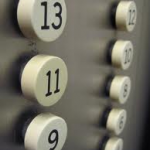Since the number of funds we can cover in-depth is smaller than the number of funds worthy of in-depth coverage, we’ve decided to offer one or two managers each month the opportunity to make a 300 word pitch to you. That’s about the number of words a slightly-manic elevator companion could share in a minute and a half. In each case, I’ve promised to offer a quick capsule of the fund and a link back to the fund’s site. Other than that, they’ve got a few hundred words and precisely as much of your time and attention as you’re willing to share. These aren’t endorsements; they’re opportunities to learn more.
The right answer to almost all investing questions over the past generation has been “buy a cheap and simple 60/40 balanced fund and don’t look back.” The cheapest and simplest option has been 60% large cap US stocks through an S&P 500 index and 40% investment grade US bonds through a Barclays Aggregate US Bond index.
The question isn’t “did it work?” (It did.) The question is, “what happens when it stops working?” That question is not hypothetical, such portfolios lost about 3% in 2018. A more venturesome 60/40 blend which incorporated an all-world index would have lost 5.5%. The greater problem is that generation-long tailwinds, such as broad tax cuts and consistently low and falling interest rates, are turning to headwinds. The consequence is that such portfolios are positioned for negligible real returns through the middle of the next decade. In early 2019, the Boston-based institutional investment and research firm GMO concluded:
For the classic 60% stock/40% bond portfolio, unfortunately, things do not look as rosy, as neither US equities nor government bonds look priced to deliver returns meaningfully in excess of inflation. The classic 60/40 portfolio is therefore priced to return a paltry +0.7% real (over the next 5-7 years) due to its large weight in those two areas.
That reflects projected negative real returns for both US large cap stocks and US investment grade bonds. “Fortunately,” they conclude, “it is certainly pretty easy today to come up with a portfolio where good requires a much less impressive economic balancing act.”
Which brings us to Ladder Capital Asset Management and the search for income-oriented investments whose success is not tied to interest rate cycles or the movement of broad bond indexes. We first encountered Ladder, and their Ladder Select Bond Fund (LSBIX), in doing research on outstanding funds that will turn three years old – and hence earn their first ratings from firms such as Morningstar and Lipper – in the year ahead. We wrote,
Other funds that caught our eye
Ladder Select Bond Fund (LSBIX), which has a Sharpe ratio that’s laughably higher than any other core bond fund, 2.27 against runner-up Invesco Total Return ETF at 1.03. The parent company, Ladder Capital Corp, is an institutional real estate investor with $6 billion in AUM and LSBIX is an institutional fund with a $100,000 minimum. Like the three funds with the highest Sharpe ratios, this Fund invests in the world of real estate securities. Ladder describes themselves as “inherently conservative … favoring strong downside protected positions with attractive credit metrics.”
In the succeeding weeks, we had the opportunity to learn more about commercial real estate as an asset class and about Ladder Capital Asset Management, adviser to the Fund.
Ladder Select Bond embodies “a senior secured CRE (commercial real estate investment) strategy.” That translates to investing principally in a combination of investment grade commercial mortgage-backed securities and CRE debt. The sectors represented include office, multifamily, industrial, retail and hospitality property. “The Fund,” they note, “has the flexibility to actively manage duration and interest rate risk depending on market conditions.”
There are three arguments for including a slice of commercial real estate investments in your portfolio.
-
CRE returns have been attractive.
“Average 20-year returns in the commercial real estate slightly outperform the S&P 500 Index, running at around 9.5%” (Maverick, 2019). Much of that return comes in the form of income generated from lease payments and passed along to investors. Ladder Select Bond’s SEC yield is 3.73%, 55 bps above the total bond market index’s. By Ladder’s calculation, the average annual excess yield of CMBS Bonds rated BBB- over Corporate Bonds rated BBB (5-Year Average through 9/30/2017) is 271 bps.
-
CRE offers an inflation hedge.
That strength derives from two sources. Rising inflation often signals a strengthening economy, which is good for real estate demand. In addition, the ability to raise rents over time allows returns to pace inflation.
-
CRE returns are largely independent of either stock or bond market returns.
At base, CRE returns are driven by two factors: (1) can you lease your property at an attractive rate and (2) can your tenants continue making their lease payments? Neither of those factors are primary drivers for stocks or government bonds and, conversely, the factors driving stocks and bonds (interest rates, EPS growth, investor lunacy) are not keys in real estate.
Here are two snapshots of that independence. First, the correlation since inception between Ladder Select Bond Fund and the Vanguard index funds representing other major asset classes.
Asset class Correlation with LSBIX Vanguard Total Bond Market Index VBTIX Investment grade bonds -0.15 Vanguard Total Stock Market Index VTSMX US stocks 0.61 Vanguard Total International Stock Index VGTSX International stocks 0.36 Vanguard Emerging Markets Stock Index VEIEX EM stocks 0.28 Vanguard Real Estate VGSIX Real estate 0.43 The second is the correlation between Ladder Select Bond Fund and the other real estate and core bond funds with the highest two-year Sharpe ratios, which is the longest comparison period available since the Fund had a 25 month record as of 12/31/18.
Category Correlation with LSBIX PREDEX PREDX Real Estate -0.18 Bluerock Total Income+ Real Estate TIPRX Real Estate 0.45 Versus Capital Multi-Manager Real Estate Income VCMIX Real Estate 0.41 Griffin Institutional Access Real Estate GIREX Real Estate 0.32 Principal Real Estate Income PGZ Real Estate 0.62 River Canyon Total Return Bond RCTIX Core Bond 0.39 Invesco Total Return Bond ETF GTO Core Bond 0.10 Putnam Income PINCX Core Bond -0.07
Summary version: virtual no correlation to the core bond funds (0.14), a negative correlation to the total bond universe and a low correlation to equities and other real estate income funds (0.45).
Academic researchers looking at the role of commercial real estate in a multi-asset portfolio have found that over five-year periods there’s always a gain from an allocation to real estate, more commonly in the form of volatility reduction than higher total returns, with some evidence that most portfolios would benefit from a 10-20% weighting in real estate.
The asset class, then, is interesting.
Ladder Capital, likewise. Ladder Capital Corp is a REIT with about $6 billion in total assets. It launched in 2008 and became an NYSE-listed stock (LADR) in 2014. It’s one of the largest non-bank commercial mortgage originators in the country and has made over $35 billion in CRE investments to date including about $10 billion in CMBS. Ladder Capital Asset Management serves as the Fund’s adviser.
The short-term performance of the young Ladder Fund reflects the longer-term performance of Ladder’s strategy for its own account adapted to the mutual fund world. Here are the Fund’s metrics from launch through 12/30/2018:
| APR | MAXDD | Recvry | STDEV | DSDEV | Ulcer | BMDEV | Sharpe | Sortino | Martin | |||||
| Fund Name | %/yr | % | mo | %/yr | %/yr | Index | %/yr | Ratio | Ratio | Ratio | ||||
| Ladder Select Bond | 2.1 | -0.5 | 1+ | 0.7 | 0.5 | 0.1 | 0.0 | 1.06 | 1.38 | 7.06 | ||||
| Core Bond Average | 1.6 | -2.6 | 14 | 2.2 | 1.6 | 1.3 | 0.8 | 0.10 | 0.15 | 0.29 | ||||
| Bloomberg Barclays U.S. Aggregate Bond TR | 1.8 | -2.5 | 16+ | 2.4 | 1.7 | 1.2 | 0.9 | 0.16 | 0.22 | 0.31 | ||||
Here’s how to read that. Since inception, the Fund has returned 2.1% a year while its average peer has risen 1.6%. Ladder’s investors have experienced surprisingly low volatility in the same stretch. The Fund’s maximum drawdown, standard deviation, downside deviation (which measures just “bad” volatility), Ulcer Index (which factors in both the length and severity of drawdowns) and bear month deviation (which looks at volatility during months when the stock market is falling) are much lower than you’d expect. All three standard measures of risk-adjusted returns (the Sharpe, Sortino and Martin Ratios) are vastly more positive for LSBIX than for its peers.
We asked managers Craig Sedmak and Tom Harney if they’d share their reflections on what makes the Fund distinctive. Here are their 300 words of insight:
Tom: Ladder Capital Corp is a publicly-traded company with high insider ownership, around 12% or $250 million or so of our own money which means we have very strong alignment of interests with our investors. Because we lend and invest strictly in the CRE market, we understand CMBS bonds and the properties that secure them rather well since commercial real estate is our sole focus..
What you most need to know about the strategy is that we’re inherently conservative investors. This is not a “get rich” strategy; it’s intended to be more of a “stay rich” strategy. We tend to invest in very senior notes, highly liquid, diversified and with hard asset support. We have about $6 billion in assets at Ladder and our funding has historically come from high net worth individuals, pension funds, registered investment advisors, and sovereign wealth funds. We decided to add a mutual fund as another way of accessing our expertise, without leverage and with daily liquidity which makes it more broadly available to investors. We think we can produce, and we think we have the record to prove, relatively safe, decent yields across market cycles.
Craig: One challenge in talking about the Fund is that there are no directly comparable peer groups to work with. Folks like DoubleLine have significant CRE investments, but they tend to be inside another wrapper that invests in other things. As discussed, the Fund invests primarily in CRE debt and CMBS. While macro-economic events may drive the asset class, given our highly focused approach, we understand the asset class and its drivers, and we’re willing to give up current income to protect principal knowing that we’ll get more opportunities soon enough. So as conditions change, the composition of the portfolio and its hedges can change dynamically to best position the fund to achieve its dual mandate of generating income and preserving capital. Probably the single greatest risk over time is duration. We can hedge interest rate risks over time with futures and we’ve built in a lot of floating rate securities.
Tom: Typical fixed income portfolios are dominated by unsecured corporate bonds and treasuries. We believe having a reasonable allocation to senior secured assets principally supported by first mortgages on a diverse pool of hard assets is a good thing. The complementary nature of this strategy has been recognized by insurance companies and pension funds for a long time. We created LSBIX for investors who want to make this highly-targeted allocation for themselves with an experienced manager in this specialized field providing daily liquidity. That’s the way we’ve invested for our clients and for ourselves.
Ladder Select Bond (LSBIX) generally has a $100,000 minimum initial investment but Ladder can waive that minimum. The fund is available for purchase through 2 brokerages, including major platforms such as TD Ameritrade . At the latter, the published minimum initial investment is $2,500. The Fund charges 0.95%. The Fund’s homepage is reasonably rich with direct and linked information. Probably the most useful piece is the Executive Summary, which offers a readable walk-through the fund’s approach and management. Their News page also offers a Commercial Real Estate Debt Primer, but it’s rather cluttered with slightly-outdated charts that only a finance guy would love. I’d start with the other.














